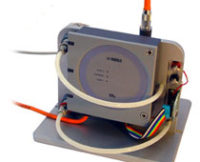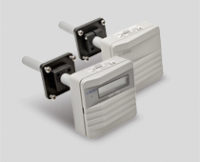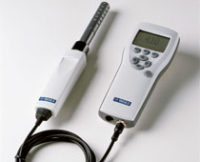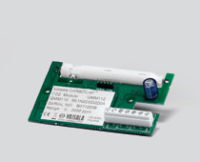Product Description
GMK220 Carbon Dioxide Calibrator for the GMP220 Series Probes
- For the calibration of the Vaisala CARBOCAP® carbon dioxide probes GMP221 and GMP222
- Spot checking with one calibration gas
- Two-point calibration with two calibration gases
- Handy tool for laboratory adjustment; PC and reference CO2 gases needed
- Probes are truly interchangeable, which enables continuous carbon dioxide measurement with good traceability
How It Works
Carbon dioxide has a characteristic absorbance band in the infrared (IR) region at a wavelength of 4.26 µm. This means that when IR radiation is passed through a gas containing CO2 , part of the radiation is absorbed. Therefore, the amount of radiation passing through the gas depends on the amount of CO2 present, and this can be detected with an IR detector. The Vaisala CARBOCAP sensor features an electrically tunable FPI filter located in front of the IR detector. In addition to measuring CO2 absorption, the micromechanical FPI filter enables a reference measurement at a wavelength where no absorption occurs. When taking the reference measurement, the FPI filter is electrically adjusted to switch the bypass band from the absorption wavelength to a nonCARBOCAP’s Unique Benefits ▪ Superior stability enabled by built-in reference measurement ▪ Minimal maintenance and calibration requirements ▪ Insensitive to dust, water vapor, and most chemicals ▪ Insensitive to changing air flow absorption wavelength. The reference measurement compensates for any potential changes in the light source intensity, as well as for contamination and dirt accumulation in the optical path. This feature means that CARBOCAP sensor operation is highly stable over time. Instruments measuring at both the absorption and the reference wavelength with a single light source are known as single-beam dual-wavelength instruments. The technology is widely applied in costly analyzers. The unique feature of the CARBOCAP sensor is its micromachined FPI filter, which performs a dual-wavelength measurement using a single detector. The compact size of the sensor means that this advanced technology can be incorporated into small probes, modules, and transmitters.













